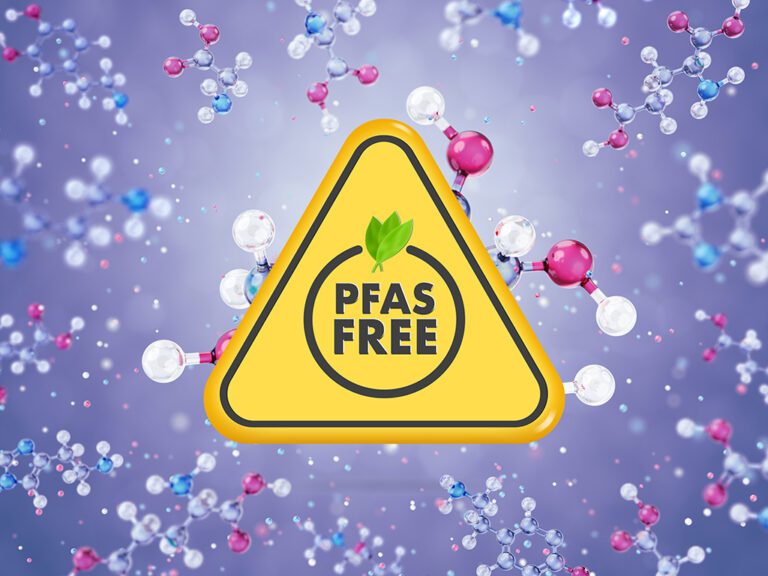Sign up for a complimentary subscription to Today's General Counsel digital magazine.
By John E. Villafranco and Katie Rogers
November 30, 2023

John Villafranco is a Partner with Kelley Drye & Warren LLP in the firm’s Washington D.C. office. Villafranco provides litigation and counseling services to household brands and Fortune 500 companies with a focus on advertising law matters and consumer protection. jvillafranco@kelleydrye.com
Katie Rogers is Special Counsel with Kelley Drye & Warren LLP in the firm’s Washington D.C. office. Her practice focuses on all aspects of advertising, privacy, and labeling compliance across a variety of media and at various stages in a product’s life cycle. krogers@kelleydrye.com
Originally published in Today's General Counsel, December 2023
Advertisers that claim that their products are “PFAS-Free” should proceed cautiously. PFAS, also known as “forever chemicals,” identify a category of more than ten thousand known synthetic per- and polyfluoroalkyl substances that are found in many different consumer, commercial, and industrial products. They are coined “forever chemicals” because of their biopersistence in the environment with strong carbon-fluorine bonds that are chemically inert and resistant to high temperatures.
The first stop for marketers should be the Federal Trade Commission’s Green Guides, which provide guidance that will help your creative team develop claims about the environmental benefits of your company’s products. The Green Guides recommend that marketers making “free-of” claims confirm the following:
1. The product doesn’t have more than trace amounts or background levels of the substance. To make this determination for PFAS, companies should test samples of the product by analyzing total organic fluorine, which serves as a proxy for PFAS.
2. The amount of the substance present doesn’t cause harm that consumers typically associate with the substance. Once the product has been tested, the level of total organic fluorine detected should be compared with the safe level for the specific type of consumer product.
3. The substance wasn’t added to the product intentionally. This requires confirmation from the supply chain network that PFAS has not been added at any point in the product’s life cycle.
4. The product doesn’t contain another substance that poses a similar environmental risk. It is important to ensure that there are no other chemicals present in the product that would pose a similar health or environmental risk as PFAS.
In addition to “free-of” guidance, the Green Guides state that, if a qualified general claim conveys that a product is more environmentally beneficial overall because of a touted benefit, marketers should analyze trade-offs resulting from the benefit to ensure they can substantiate the claim. This is to confirm that there are no other stages in the life cycle that may be negatively impacted and ultimately result in a net negative environmental effect from the use of the product. Companies should consider how this guidance may affect their ability to make general environmental benefit claims, such as “eco-friendly” or “sustainable” if the product they sell or the manufacturing process they use employs PFAS or some other harmful chemical.
There is a long and growing list of consumer product companies that have been sued over the alleged finding of PFAS in products making PFAS-Free or other environmental claims. This list includes sports drink maker, BioSteel, which got hit with a class action lawsuit earlier this year alleging that its “eco-friendly” claims are false and misleading because the drink contains an elevated level of PFAS. In August, BioSteel filed a motion to dismiss because, among other things, the company pointed out that the plaintiff did not explain any details regarding the purported “independent third-party testing” other than to say it was done to industry-accepted standards. The case is pending but it highlights the high level of scrutiny over PFAS contamination, particularly with products claiming to be environmentally beneficial.
And this scrutiny will only intensify, given the ubiquitous nature of the class of PFAS chemicals and the non-targeted nature of the testing available. Indeed, some level of PFAS may be detected despite companies’ best efforts to avoid it. For example, PFAS could potentially leach from packaging during shipment or while a product is on shelves.
All of this warrants keeping a close eye on PFAS-related developments and litigation trends, particularly those marketers considering making any PFAS-Free or other general environmental benefit claims. The FTC is currently reviewing the Green Guides and is expected to release updated guidance in the coming year. It is unlikely that the FTC will provide more technical guidance on “free-of” claims and, in particular, PFAS-Free claims, but look out for more guidance on general environmental claims and how the presence of concerning chemicals, like PFAS, in a product may impact the types of general environmental claims that can be made for consumer products.
Sign up for a complimentary subscription to Today's General Counsel digital magazine.
Sign up for our free daily newsletter for the latest news and business legal developments.